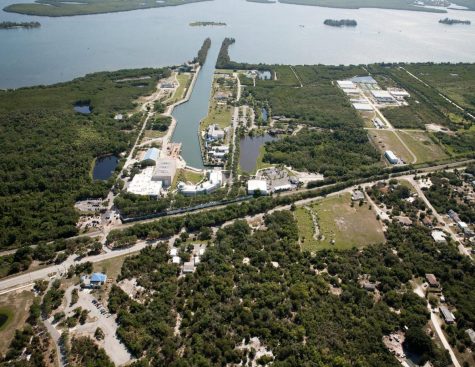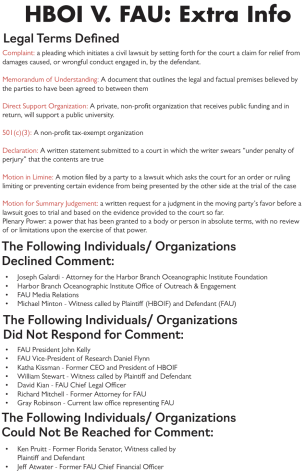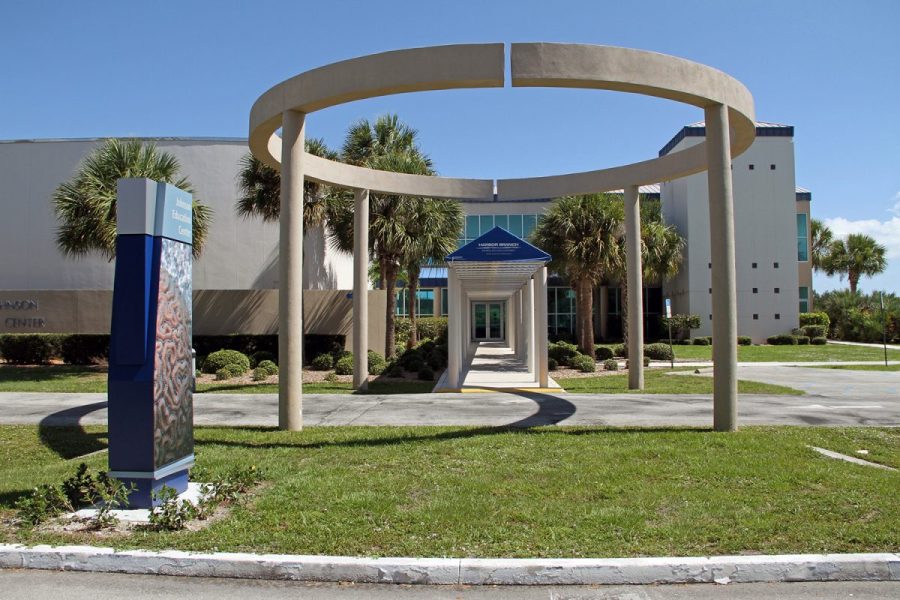Harbor Branch Oceanographic Institute Foundation sees its day in court in lawsuit against FAU
Brazen oversteps by FAU force the non-profit’s hand.
October 29, 2021
In 2017, the Harbor Branch Oceanographic Institute Foundation sued FAU over the violation of a memorandum of understanding reached between the two parties when they merged in 2007. Four years later, the HBOI, which FAU President John Kelly once referred to as the “crown jewel” of the university, is about to see its day in court.
The Harbor Branch Oceanographic Institute Foundation, the direct-support organization that oversees the HBOI, filed the original complaint. They alleged that the university engaged in what the foundation claims was a “brazen power play” to gain control of the Harbor Branch Oceanographic Institute’s grants and endowment, valued currently at $67 million.
With the first trial date set for Nov. 8, the ensuing legal battle will decide the future relationship between the prestigious research institute and FAU.
A history of HBOI and its merger with FAU
John Seward Johnson Sr. founded the Harbor Branch Oceanographic Institute in 1971 as a marine research organization to “fulfill [Seward’s] vision of preserving the environment through a deep, scientific understanding of the ocean.”
The Harbor Branch Oceanographic Institute Foundation is a 501(c)(3) non-profit organization which oversees the distribution of grants from the HBOI to FAU.
FAU and the HBOI merged in 2007 through a memorandum of understanding wherein the state of Florida funded FAU’s purchase of the land, facilities, and intellectual property of the HBOI.
The condition of this purchase was that the HBOI Foundation’s Board of Directors would have control over funds received through the sale of specialized license plates and endowments from the Johnson family. The foundation would also have sole discretion on the disbursement of research grants to FAU awarded by the state of Florida.
The exchange was mutually beneficial. The HBOI received an influx of capital for operating expenses from the sale of its facilities, and FAU received a prestigious marine research center to promote new avenues of study. But a 2012 dispute over the use of the foundation’s funds threatened the symbiotic relationship of the two parties.
As the University Press reported in 2017, the dispute began when former FAU President Mary Jane Saunders asked the HBOI Foundation for a $50,000 donation to build the university’s foot- ball stadium. The foundation declined, stating that funds from Harbor Branch can only be used for the purposes of marine research. Five years later, the foundation asked FAU for over $400,000 to file the current lawsuit against the university.
The Takeover
Foundation attorneys filed charges in a bid to retain its autonomy after FAU Vice President of Research Daniel Flynn announced during a Foundation board meeting that the HBOIF’s administrative functions would be merged with FAU.
According to a declaration filed by former HBOI Foundation CEO Katha Kissman in November 2017, this merger would have resulted in Flynn taking over as CEO and thus having control over the distribution of funds to the university.
According to the HBOI website, the foundation’s goal “is to support FAU’s Harbor Branch as it increases understanding of oceans and coastal areas through exploration and scientific investigation.”
But Kissman’s declaration asserts that in some cases, grant money the foundation gives FAU has built up in the university’s accounts without unspent funds being returned, which violates the foundation’s funding requirements.
Kissman also notes in her declaration that prior to January 2017, FAU approved the foundation’s budgets without any alteration or input. That changed after the meeting wherein Daniel Flynn proposed the merger. Kissman did not respond to requests for comment.
FAU rejected the foundation’s proposal, but Flynn introduced the budget proposal that named him president and CEO of the foundation. This appointment of Flynn to CEO was received as a takeover attempt by the foundation, to which FAU responded with this statement that was reported by the Palm Beach Post:
“FAU is surprised and disappointed that HBOI Foundation has misinterpreted our commitment to our partnership and to our shared responsibility for efficient and proper stewardship of our resources.”
But a declaration made in November 2017 by former FAU Assistant Vice President of Budget Finance for the Division of Research James Wilkie alleges that taking over the HBOI was exactly what Flynn had planned.

According to his declaration, FAU and Daniel Flynn agreed to a goal of bringing in $100 million in research grants from private, local, state, and federal sources. By late 2016 and early 2017, it became
clear that the university would not meet its stated goal. The Division of Research was operating in the red, spending more money than it was bringing in through revenues. It was around this time, Wilkie states, that Flynn mentioned taking over the HBOI Foundation.
According to Wilkie, Flynn told him that he wanted to use the Harbor Branch funds to hire researchers for FAU who were unaffiliated with Harbor Branch. Since the Harbor Branch Foundation’s funds could only be used for research conducted at the HBOI, Flynn would have to remove the foundation’s CEO and attorney. After removing these barriers to the funding, Flynn would then be closer to reaching his goal of $100 million in research grants.
In Court

FAU had previously filed a motion to dismiss the case in June 2017 on the grounds that it is “based on a hypothetical state of facts which have not arisen and are only contingent, uncertain, and rest in the future.” Attorneys for FAU explained in their motion that the foundation had no proof that their proposed budget would be refused by the university or that the new budget devised by Flynn would be adopted.
The motion came three weeks after the HBOI made a court request for the university to produce documents and communications exchanged between the two parties. This motion was rejected by the court after attorneys for the HBOIF submitted a response claiming that the dispute is not about budget approvals, but “about whether FAU has plenary power to take over Harbor Branch–through an improper budget approval process or otherwise.”
After years of motions, document requests, and submissions made by both parties, the case is approaching a non-jury trial. Two motions filed by FAU on Sep. 24 reveal the university’s efforts to tilt the case’s outcome in its favor.
The motions filed by FAU consist of a Motion for Summary Judgement and a Motion in Limine, the latter of which is a request that attorneys not present certain evidence at trial.
The request by FAU is that the foundation’s attorneys do not present at trial “irrelevant, prejudicial, and cumulative evidence with no bearing on the proper interpretation of the Memorandum of Understanding, including evidence related to the Foundation’s allegation that in 2017 FAU attempted to ‘take over’ the Foundation and its endowment.”
The Motion for Summary Judgement asks the court to provide a ruling on the case before it goes to trial. The court refused the MSJ since it was made within a 40-day window of the beginning of trial.
On Oct. 13, attorneys for FAU canceled the hearing for the Motion in Limine scheduled for Oct. 18, and no further hearings are currently scheduled before trial. Attorneys for FAU have not responded for comment.
Editor’s Note: This story is a part of our October/November issue titled “On Campus and Awaiting Trial,” which you can pick up on campus or read online here.
Tyler Childress is a Contributing Writer for the University Press. For information regarding this or other stories, tweet him @birthoftheblue or email tchildress2019@fau.edu.







